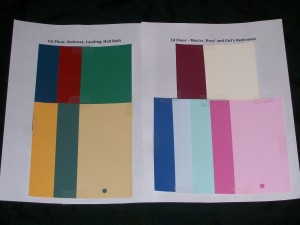Painting services delivered in a home environment sometimes present a particular challenge. Minimizing the stress on the family, while maintaining the efficiency of the painting operations is most important. On this particular project, the close coordination of the house painting activities was critical, due to the fact that the owners home-school their three children and the dad works out of the house a good part of the time. Additionally, there is a delightful 160-pound Leonberger dog which is also part of the family and whose needs for space must be taken into account. Her name is Bella, shown here holding one of her furry friends
Because of the Holidays, it was decided that the painting project would be divided into two phases, the downstairs and the upstairs. A convenient start time for the family was agreed upon. The family then developed an off-premise schooling plan for the duration of the painting project. We then discussed the game plan for tackling the sequencing of the rooms we will be working on. Since painting services involve performing multiple tasks with varying dry-time requirements, we made the decision to only have two painters working on the project and work in no more than 2 rooms at a time. This way, we could avoid disabling the whole house and creating chaos for the family.
Keeping the stress down for the family during a house painting project is critical to producing a successful painting experience for our clients. Balancing the needs of the family with the needs to maintain the efficiency of the painting operations is surely a balancing act. As house painting contractors doing work mostly in occupied buildings, we are committed to maintaining a happy balance between those two key factors.








 Follow
Follow


